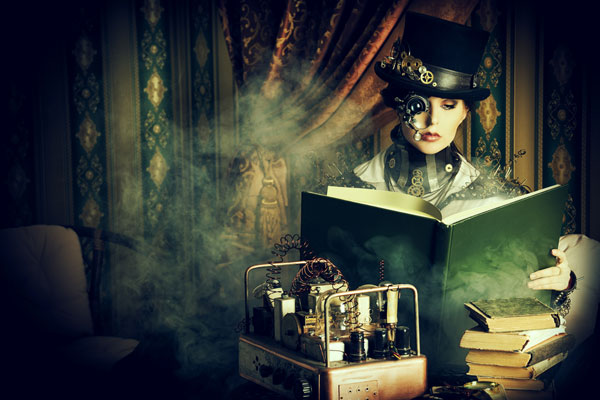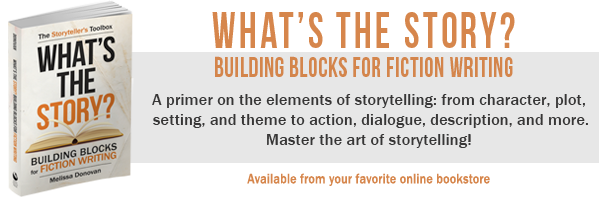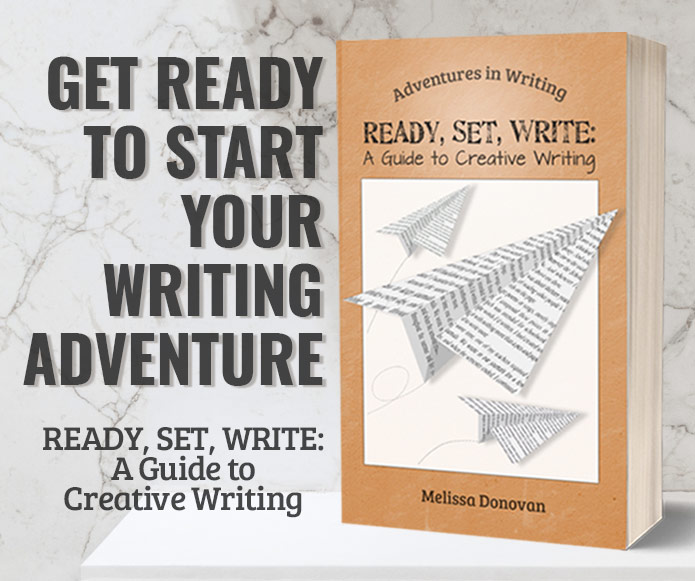Today’s post includes excerpts from What’s the Story? Building Blocks for Fiction Writing, chapter eight: “Description and Exposition.” Enjoy!
Without description, readers wouldn’t be able to visualize what’s happening in a story. We need to see the setting and the characters. Because there are no visuals in prose, writers must use words to describe a story’s visual elements in a way that helps readers see the story playing out in their minds.
Prior to film and photography, prose was packed with lengthy and detailed description. If a story was set on a tropical island, the narrative needed to describe it in great detail, because most readers had no idea what a tropical island looked like. Nowadays, most people have some idea of what a tropical island looks like, thanks to films and photos, and many people have traveled to a tropical island, thanks to advances in transportation. This lessens the need for elaborate descriptions. Modern writers can therefore write simpler and more concise descriptions, which allows them to place greater emphasis on action and dialogue. This is a good thing, because action and dialogue are where a story really happens.
Description is most essential when we’re describing characters, locations, and objects that readers have never seen or experienced. These can be some of the trickiest types of descriptions to craft. In a science-fiction story, it can be challenging to describe an alien to an audience that has never seen such a creature. We can use points of reference: maybe the alien is humanoid in shape, maybe it has some features that we can compare to plants and animals on Earth. But tying it all together in a tidy description that truly matches what the author is imagining might be a formidable task.
Let’s consider a description of a room:
There is a bookshelf in one corner and a chair in the opposite corner. There’s a couch and a coffee table in the center of the room. A piano sits in front of a large picture window. The walls are wood paneled and covered with paintings.
This description may give you a sense of the room, but it’s boring. Readers are likely to drift off if a description continues like this for too long.
What’s wrong with this description? Almost every sentence begins with “There is” or some variation of it, and most of the verbs are various forms of to be. Although it’s useful to draft descriptions in this manner, these sentences need to be reworked so that they hold the reader’s attention:
A massive oak desk sat below a large picture window, beside a shelf overflowing with books. Hardcovers, paperbacks, and binders were piled on the tiled floor in messy stacks.
Note the use of active verbs, such as overflowing, and descriptive adjectives, like messy. Good narrative description makes the setting more vivid by using language that engages the reader.
Effective description is often achieved not by inserting long and specific descriptions but by making thoughtful decisions about what to include and what to leave out. When a narrative brings readers into a room, it doesn’t need to cite every object in the room and explain in minute detail how the room is laid out. The goal is to give readers a sense of the room. That is best achieved by providing readers just enough description that they can see key details and trusting that their imaginations will fill in the rest.
Description also determines how immersed readers get in the story. We could describe the sand on a beach as white and sprawling in every direction as far as the eye could see. But if the character is walking on the sand, the reader will become more immersed when the sand is hot, grainy, and gritty against the character’s feet. When description is visceral—when we can feel it—it comes alive.
Description can be used to engage readers’ five senses: sight, sound, smell, touch, and taste. Average descriptions focus on sight, explaining what something looks like. But descriptions that include the other senses will arouse the readers’ senses. This is why dining scenes work remarkably well in prose. We can use description to set a scene in which characters are cooking a meal: the warmth from the oven; bright, fresh vegetables steaming on the stove; the sound of a sizzling skillet; the smell of spiced chicken frying; the sound of an ice-cold bottle of beer cracking open. The readers’ mouths will water as the characters enjoy their spicy, zesty fajitas.
The most important descriptions are those that are essential to the story. Have you ever read a story that offered detailed descriptions of mundane items and locations and then skimmed over the descriptive details of story elements that really mattered? This causes readers to struggle to imagine the story. For example, if a character has been in a terrible accident and is getting bandages removed for the first time, there should be some description of the wounds or scars as opposed to a description of the hospital room. This helps the readers focus on the character (and therefore the story) as opposed to a generic room. By adding description that references the smell of antiseptic and the slick, cold texture of the doctor’s latex gloves, the scene becomes sensory and visceral.
Want to learn more about writing description in fiction? Pick up a copy of What’s the Story? Building Blocks for Fiction Writing.






Thank you for that most helpful and insightful post. I will certainly look harder at my descriptions in the light of what you have said. Are they boring or do they invoke the senses and a sense of place?
Thanks, Vivienne. I’m glad you found this post helpful. Descriptions come naturally to some, but I like to review mine carefully to make them as interesting as possible.
Thank you for this piece. It’s an interesting read.
You’re welcome!
This is a great article on writing description. It’s flipped how I’ve been approaching description when writing. Thank you so much!
Thanks for your kind words!
Sitting on my veranda, overlooking the beautiful horizon where sunset was melting into dark blue velvet, I felt sleepy and bored. I turned to my laptop and discovered your fascinating article about descriptions in fiction writing. Finally, something interesting and stimulating in my email! Thank you for providing great insight!
What a lovely compliment, Linda. Thanks so much. I’m glad you found this interesting.